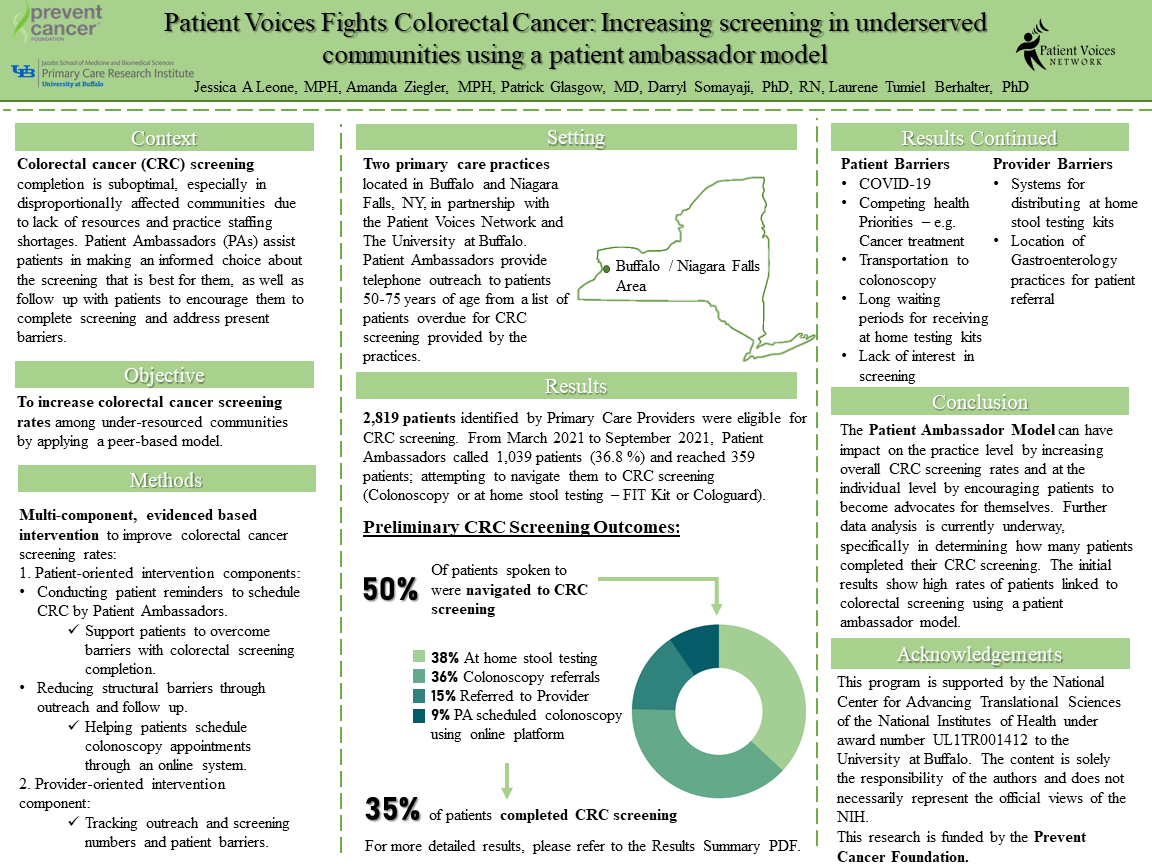SRFP076: Patient Voices Fights Colorectal Cancer: Increasing screening in underserved communities using a patient ambassador model
Jessica Leone, MPH; Laurene Tumiel-Berhalter, PhD; Darryl Somayaji, PhD, CNS, CCRC; Patrick Glasgow, MD; Amanda Ziegler
Context: Colorectal cancer (CRC) screening is suboptimal, especially in underserved communities, due to lack of resources and practice staffing shortages. Patient Ambassadors (PA) assist patients in making an informed choice about the screening that is best for them, as well as follow up with patients to encourage them to complete screening and address present barriers. Objective: To examine the utility and impact of using the Patient Ambassador model (PAM) to assist patients with CRC screening in a primary care setting Study Design: Process evaluation of pilot program Setting or Dataset: 2 primary care practices located in Buffalo and Niagara Falls, NY in partnership with the Patient Voices Network and The University at Buffalo. PAs provide telephone outreach to patients from a list of patients overdue for CRC screening provided by the practices. Population Studied: Individuals 50-75 years of age (Grade A USPSTF CRC screening recommendation), who are due for CRC screening, and are patients at one of the two participating practices Intervention/Instrument: The PAM engages patients to encourage other patients to be preventively screened for cancer and has been shown to be effective in increasing mammography uptake. The PAM was adapted to improve CRC screening in response to the need for assistance in primary care. PAs provide patient outreach support, education, linkage to CRC screening options, and follow-up support. Main and Secondary Outcome Measures: Total number of patients called, total calls made, total number of patients spoken to, total number of patients linked to colorectal screening, total number of patients who completed screening Results or Anticipated Results: 2,819 patients were eligible for CRC screening. Within five months, 741 patients were contacted and 253 were spoken to. About 55% of patients spoken to were linked with CRC screening test scheduling (for colonoscopy) or mailing of at home tests (FIT or Cologuard). Conclusions: The PAM can have impact on the practice level by increasing overall CRC screening rates and at the individual level by encouraging patients to become advocates for themselves. Further data analysis is currently underway, specifically in determining how many patients completed their CRC screening. The initial results show high rates of patients linked to colorectal screening.

Jack Westfall
jwestfall@aafp.org 11/21/2021Terrific project. Great poster and abstract. Thanks for sharing at NAPCRG